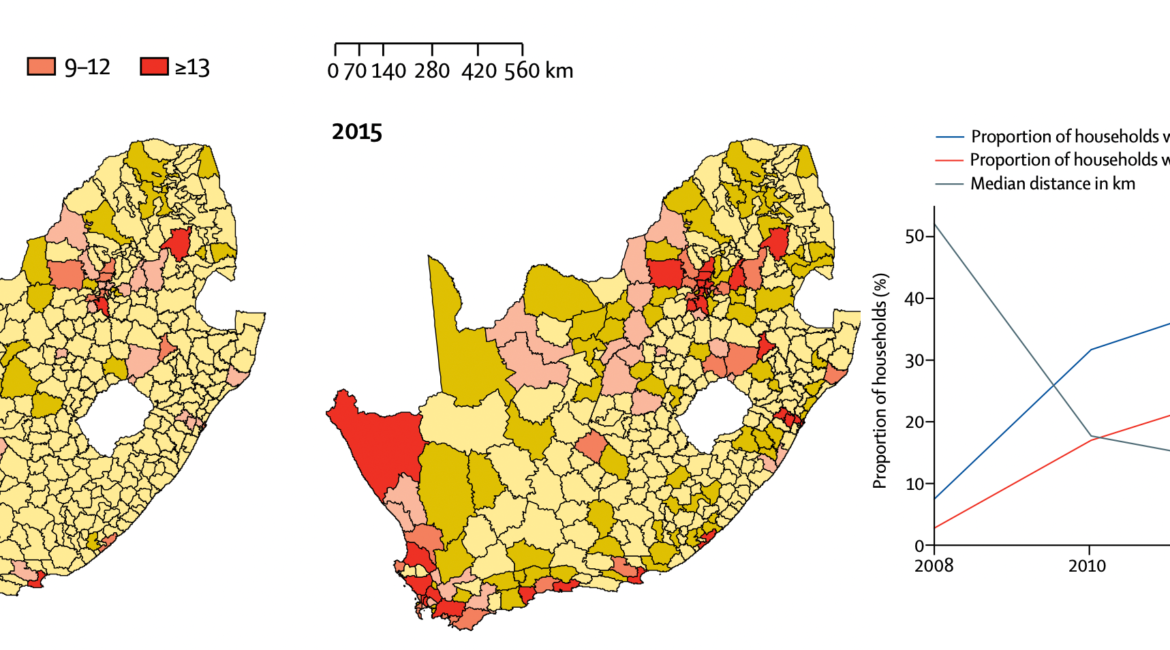Lancet Planetary Health, 2020.
Authors: Tomita A, Cuadros DF, Burns JK, Tanser F, Slotow R.
Journal: Lancet Planetary Health,4: e223-34: (2020)
Abstract
Background Rapid population growth, urbanisation, and economic development have led to an unprecedented number of waste sites in developing countries. This challenge has become a contentious international relations issue, with an unsustainable amount of waste and its health consequences often being borne by developing countries. However, little national-level evidence is available in sub-Saharan Africa to quantify the association between exposure to waste sites and health.
Methods We used panel data from the South African National Income Dynamics Study (SA-NIDS) to investigate the association between exposure to waste sites and asthma, tuberculosis, diabetes, and depression. The SA-NIDS is a panel survey of a nationally representative sample in South Africa, which includes data reporting the health status of 32255 individuals between 2008 and 2015. The study exposure was distance of households, in km, to the nearest waste site, derived from waste site geospatial locations from the South Africa Waste Information System.
Findings We observed a substantial increase in exposure of households to waste sites between 2008 and 2015. The median distance between study households and waste sites decreased from 68·3 km (IQR 31·1-111·7) to 8·5 km (3·0-23·7). Residing within 5 km of a waste site was significantly associated with asthma (adjusted relative risk 1·41; 95% CI 1·20-1·64), tuberculosis (1·18; 1·02-1·36), diabetes (1·25; 1·05-1·49), and depression (1·08; 1·03-1·14). The association persisted even after controlling for multiple socioeconomic factors.
Interpretation We identified multiple adverse health outcomes in individuals living close to waste sites at a national level in South Africa, suggesting the need to reduce the number and size of waste sites to diminish harmful effects on health and wellbeing for communities living in close proximity to such sites.

